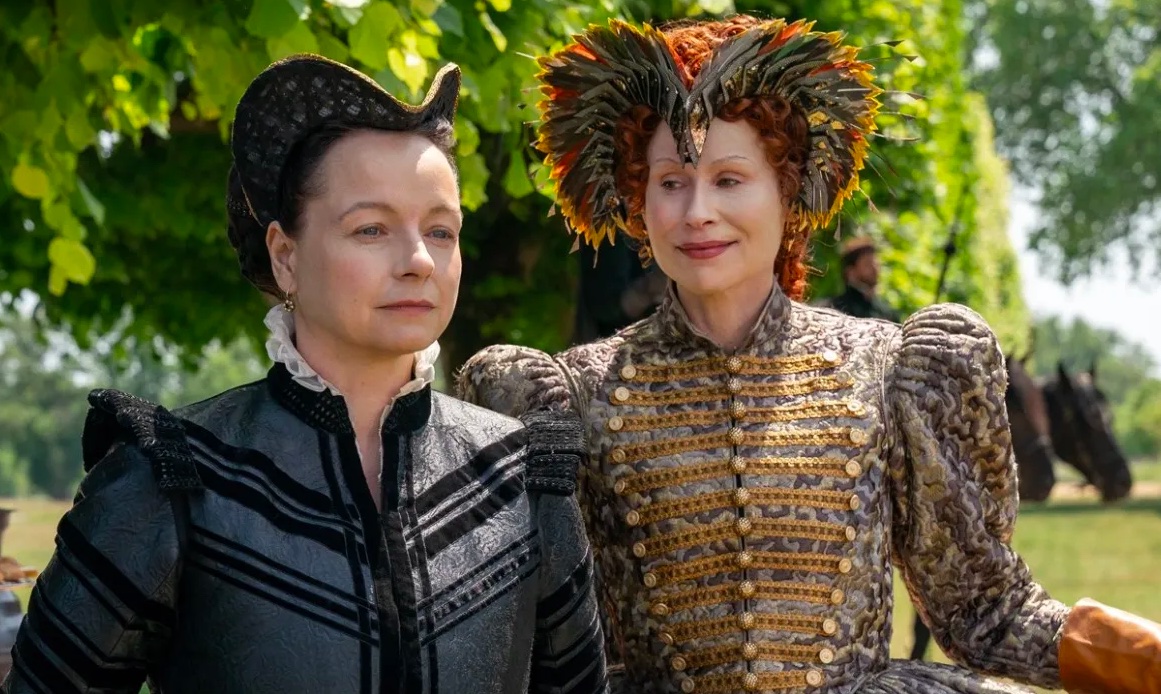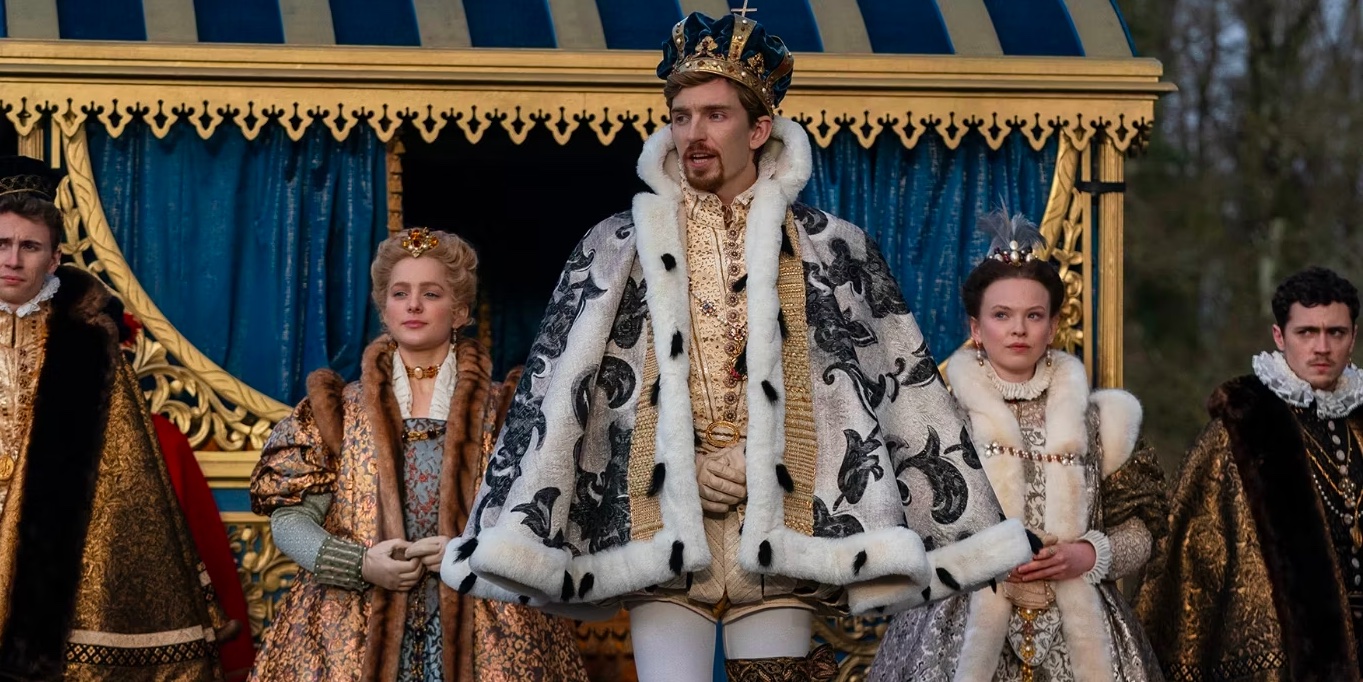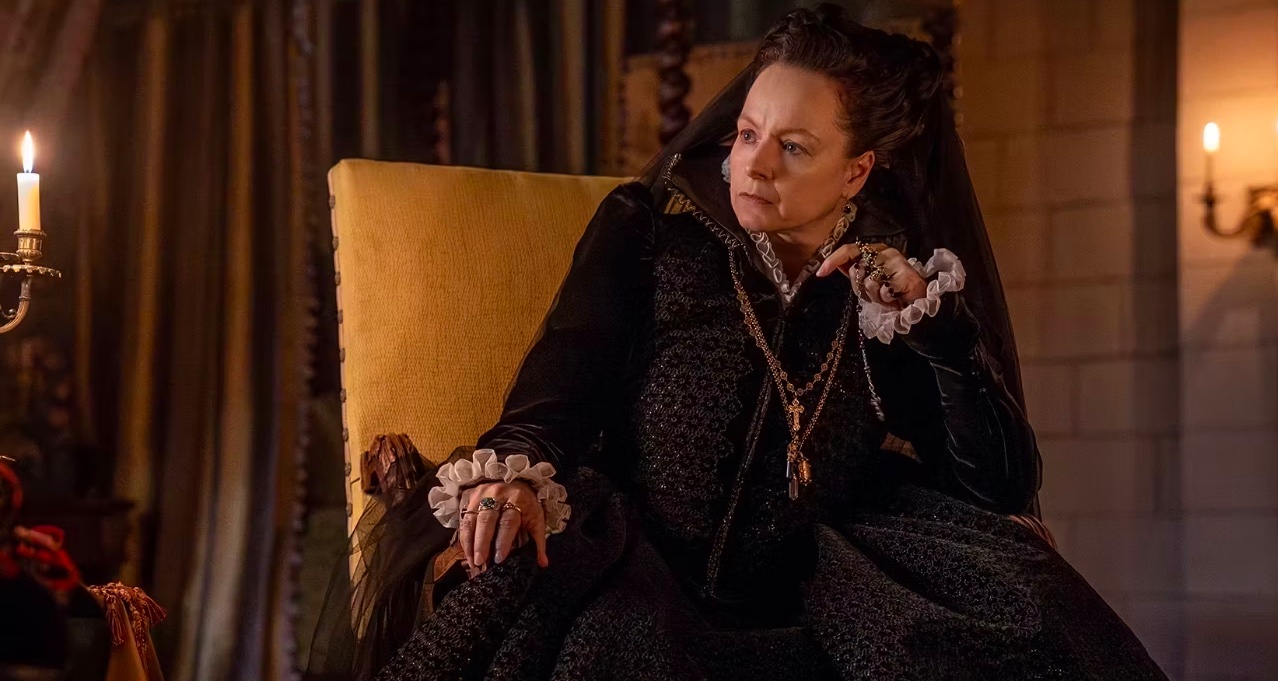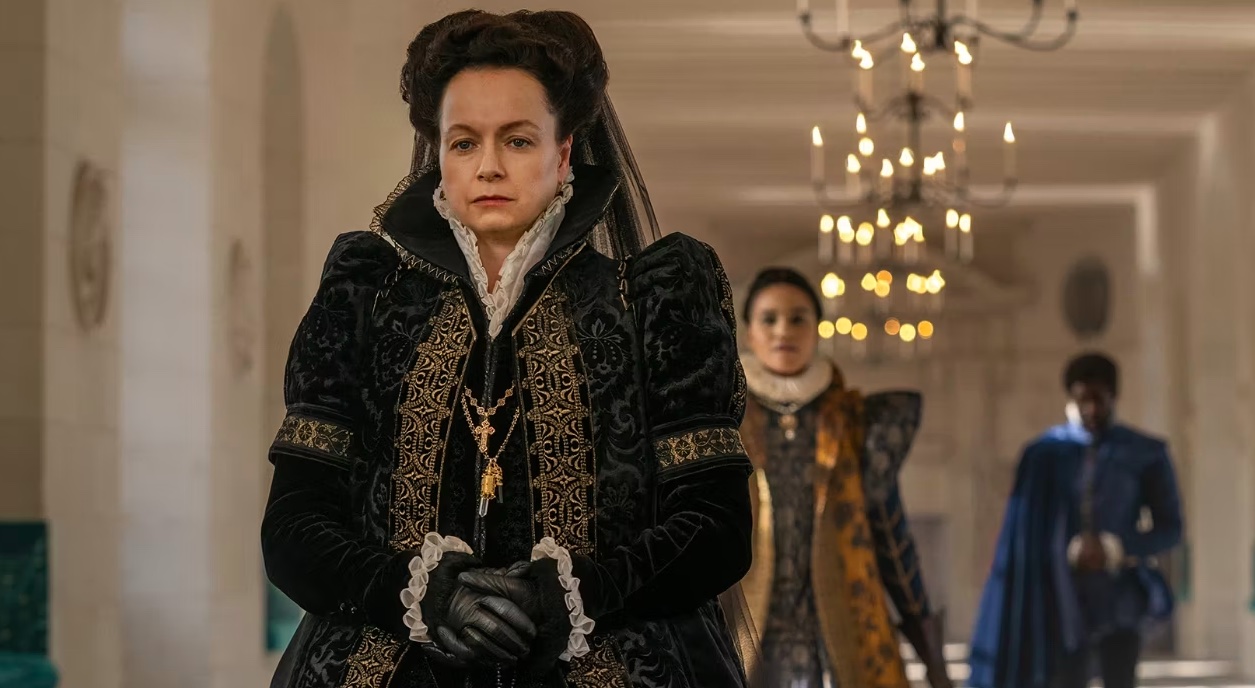Starz’s ‘The Serpent Queen’ tells the story of one of French history’s most powerful and divisive figures. The protagonist is Catherine de Medici, who comes from an influential family under complicated circumstances. The show’s first season focuses on her journey as a young girl who comes from nothing to marry the future King of France and slowly but diligently carve a space for herself in the French court. It is a long and winding road, and Catherine learns many lessons along the way, the most important of which is never to trust anyone. The second season continues her story but takes a time jump that significantly rewrites her policies and position in court. SPOILERS AHEAD
The Serpent Queen Season 2 Takes a Decade-Long Jump

The last we saw of Catherine was her winning the conflict that resulted in her getting the regency of France when her 11-year-old son Charles became king following the death of her first son, Francis. With her young son, who has no mind of his own, Catherine essentially becomes the ruler of France. By now, she has learned how to navigate the delicate politics of the court, especially the discord between the Bourbons and the Guises, and she is ready to put her shrewd mind to good use and transform France. That was 1561.
The second season picks up in 1572, over a decade after Charles is crowned king. A lot has changed over the course of a decade, and yet, for Catherine, it seems that her hold on power remains the same. Even though her son is not a child anymore, she continues to be his voice in the court, and whatever she says goes. The Guises and Bourbons are still trying to establish their monopoly over the country’s religion, and this ongoing conflict serves as a primary catalyst of all the drama that entails this season.
For the creators of ‘The Serpent Queen,’ taking this decade-long leap seemed like a logical next step in Catherine’s journey. The audience has already witnessed Catherine’s evolution. We have now looked into the complicated abyss of her intentions and hunger for power and better understand her motives and choices. To continue her story, the writers needed to focus on an event that was a huge landmark in Catherine’s reign, an event that changed everything for her. They narrowed down this event to St. Bartholomew’s Day massacre, which happened in 1572.

Instead of dragging the audience through another season of another decade, the show’s creators decided to directly jump to 1572 and build the season around the massacre, raising the stakes for the characters and feeding more drama into the story. Through this, they also intended to concentrate the season on a certain year(s) rather than cover an entire decade in one go, giving the characters more time to breathe and delivering the story at a different pace than the last season to keep things fresh.
The Time Leap Allows to Skew Historical Timeline and Events
While the show jumps eleven years or so, this doesn’t mean that nothing important happened within that timeline in real life. It does not signify that Catherine and France had no issues for a decade, and everything ran smoothly. In fact, in taking the leap, the show skews the events and timelines to suit its purpose, and many things we see on the show are not chronologically correct. The leap allows the writers to skip things like Mary, Queen of Scots’s tragic fate, and Diane de Poitiers’s death. Both characters lost to Catherine by the end of the first season, and it made sense that they shouldn’t return for the second season. Other characters also died during this lifetime, but the show doesn’t bother to stick to that version of history.

For example, Montmorency is still alive in 1572 in ‘The Serpent Queen,’ but he died in 1567 in real life. In the same vein, Charles IX was already married by this time, and Catherine’s regency had officially ended, though she continued to have a hold on the court. The royal tour of France that we see at the beginning of Season 2 happened in 1564 in real life and spanned two years, but it is presented very briefly in the show. Moreover, this decade also marked significant unrest between the Catholics and the Protestants, and it was this conflict that eventually exploded on St. Bartholomew’s Day massacre.
Important events like these couldn’t simply be skipped over, so the show’s creators found it best to skew the timeline a bit so a lot of things that we see happening in 1572 in the show happened in different years but culminated in the massacre. Thus, even with the time jump, the show tries to remain as faithful to the series of events as possible, presenting them to the audience so that they don’t miss anything and be confused by why a certain thing happened without any explanation. The leap allowed the writers to condense the important events of the decade into one year and make the story crisper and sharper, which renders it even more enjoyable.
Read More: Why were Rahima and Montmorency Recast in The Serpent Queen Season 2?


You must be logged in to post a comment.